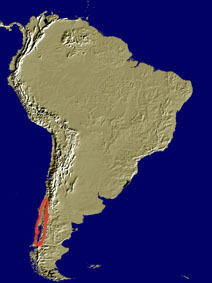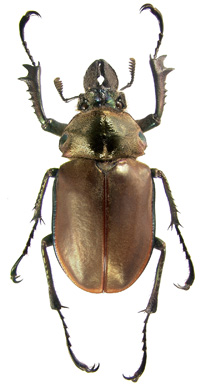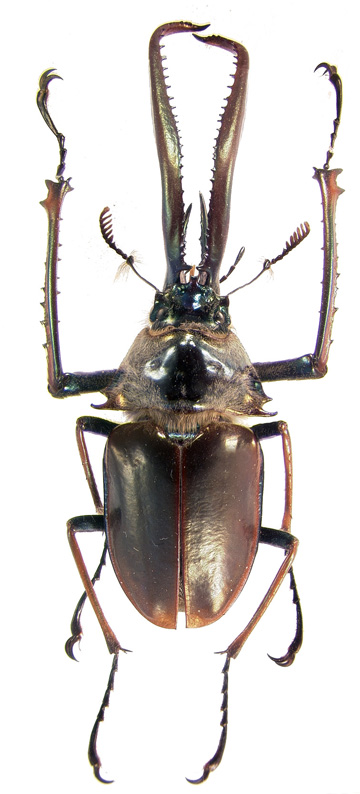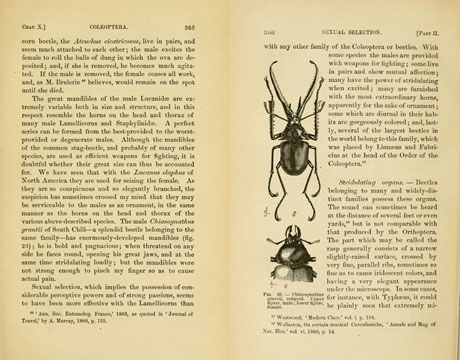 |
|||||||
|
|||||||
Chiasognathus grantii Stephens, 1832
....Chiasognathus grantii Stephens, 1832: 214 (original combination)
....Tetropthalma chiloensis Lesson, 1833: 6 (synonym)
....C. affinis R. Philippi in F. Philippi, 1859: 658 (synonym)
....C. brevidens Germain, 1911: 47 (nomen nudum)
....C. pygmaeus Dallas, 1933: 74 (synonym).
....C. grantii holometallicus Rataj, 2012: 74 (synonym, including unavailable 'varieties')
|
||
| Lucaninae Genera | ||
|
||
| Lucanidae Taxa Map | ||
| Lucanidae Catalog | ||
| Lucanidae Key | ||
| Lucanidae Gallery |
|
 |
Approximate distribution of C. grantii. |
|
 |
|
Chiasognathus grantii Stephens, male. Photos by M.J. Paulsen |
C. grantii female. |
Remarks:
Grant’s stag beetle, sometimes referred to as Darwin’s stag beetle, is the largest species in the genus and one that commands a great deal of attention. Other common names for the species include ciervo volante, llico-llico, and cantábria. The spectacular fights between males are marked by crunching exoskeletons and flinging each other from the tree trunks where the fights occur. As with other chiasognathines, larvae live in the soil and feed on plant roots. Adults may be seen flying just before dark and are attracted to lights. Within Chiasognathus, sound production in the adult appears to be an autapomorphy of this species that may be related to the larger size and threat display behavior. Darwin (1871) remarked in The Descent of Man that "The male Chiasognathus grantii of South Chili a splendid beetle... has enormously-developed mandibles; he is bold and pugnacious; when threatend on any side he faces round, opening his great jaws, and at the same time stridulating loudly; but the mandibles were not strong enough to pinch my finger so as to cause actual pain."
Distribution: Chile: Biobío to Aisén; Argentina: Neuquén to Chubut.
Chalumeau, F., and B. Brochier. 2007. Chiasognathinae [Chiasognathini] of the Andes. Taita Publishers. Hradec Králové, Czech Republic. 324 pp.
Darwin, C. 1871. The Descent of Man, and Selection in Relation to Sex. London: John Murray. 1st ed.
|
||||
|
|

